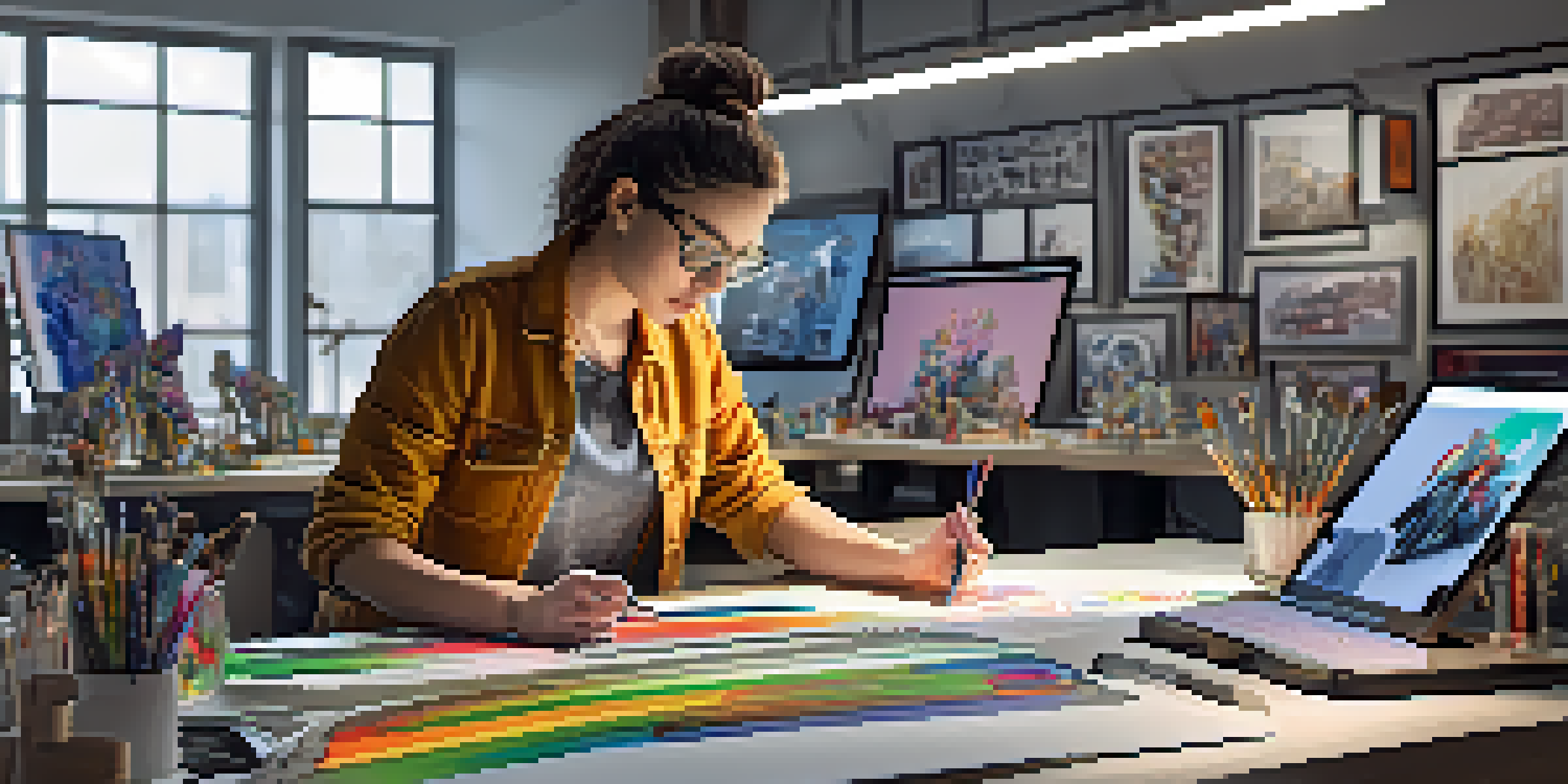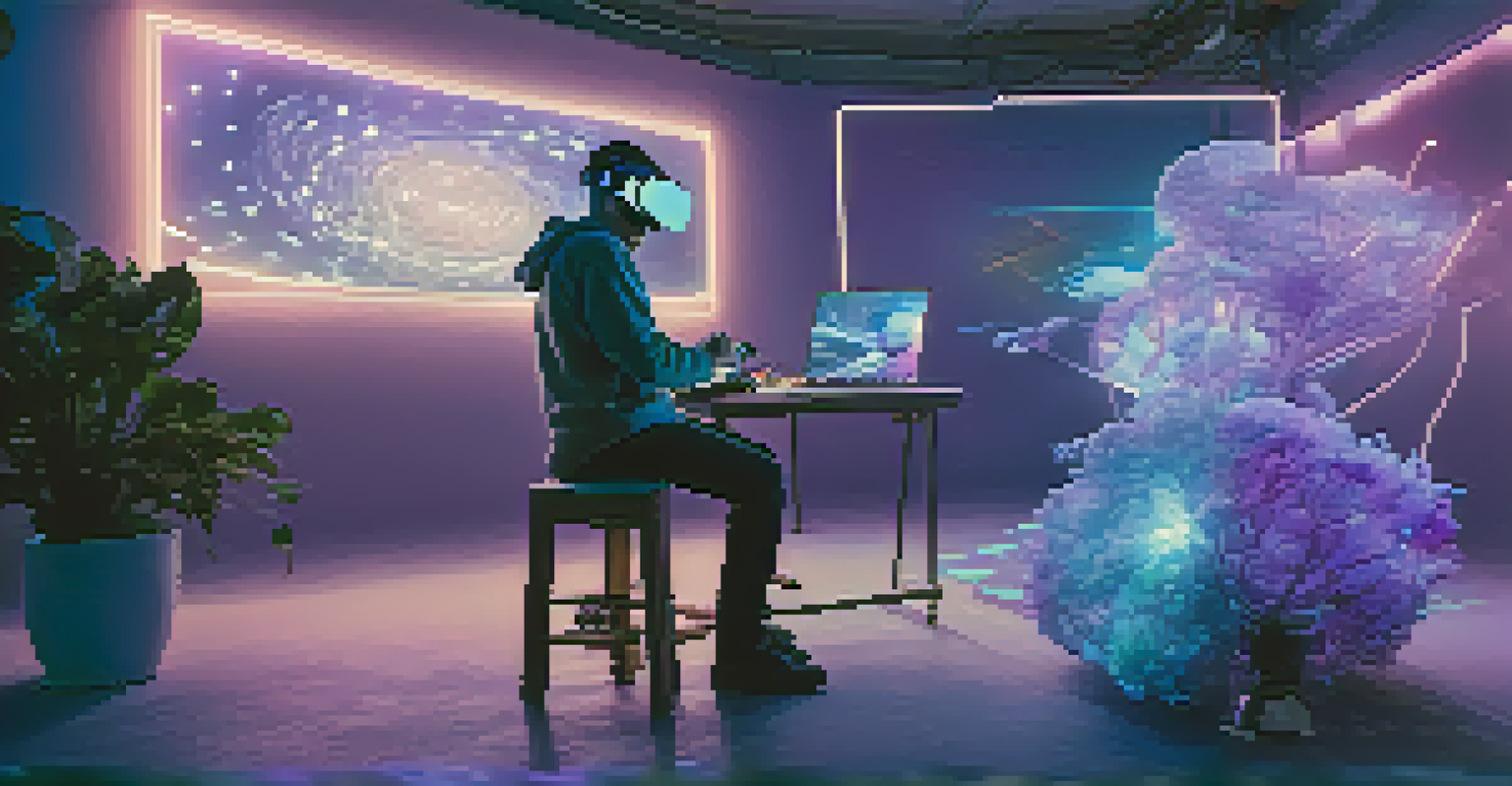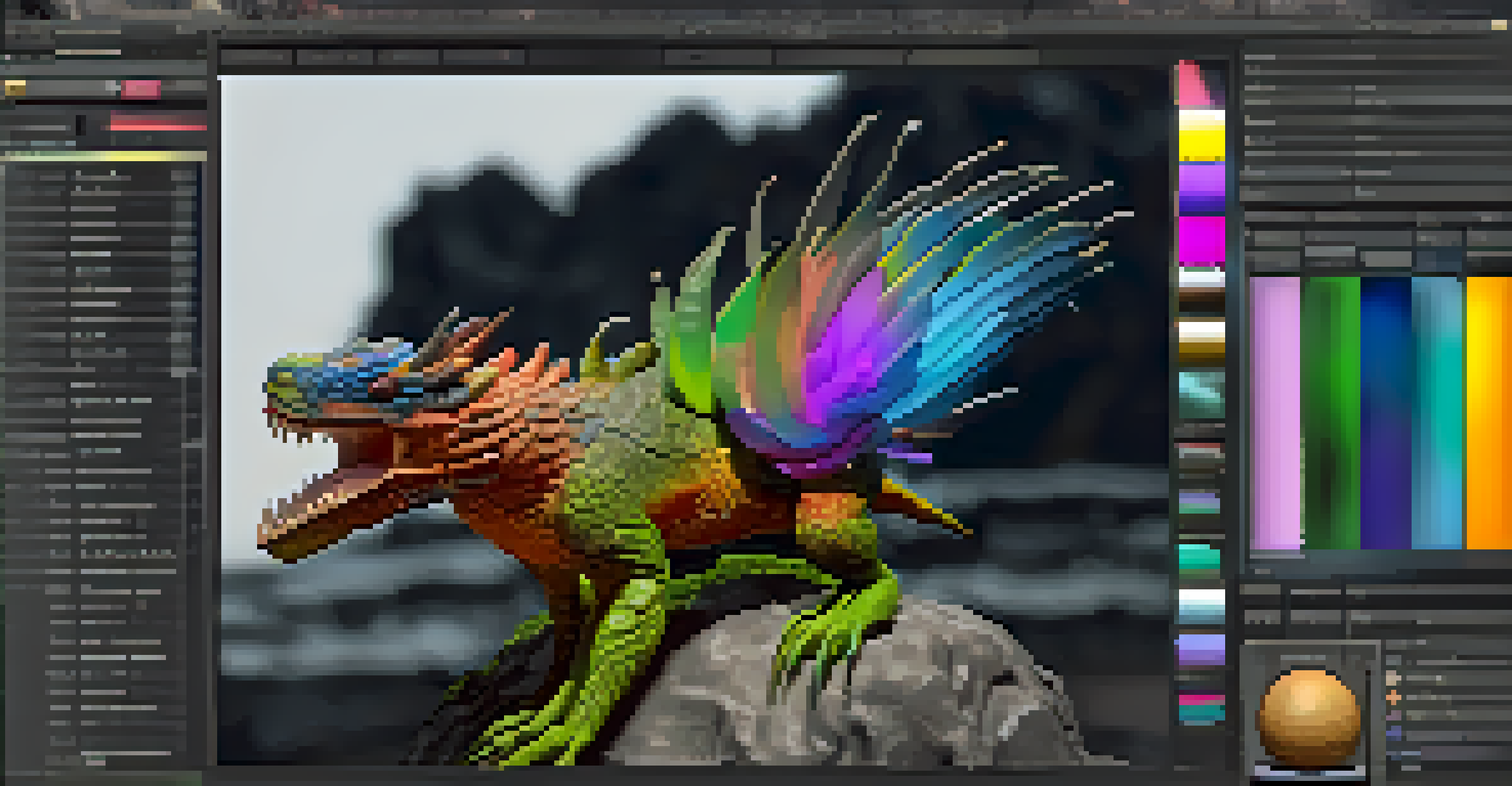Digital Sculpting Software: A New Era for Carving Artists

Introduction to Digital Sculpting Software
Digital sculpting software represents a groundbreaking shift in the world of art. Artists can now create intricate sculptures using tools that were once reserved for traditional methods. This technology offers a new realm of possibilities, allowing for creativity without the physical constraints of materials.
The artist is not a different kind of person, but every person is a different kind of artist.
With the rise of software like ZBrush and Blender, sculptors can manipulate virtual clay with ease, making it possible to experiment freely. Imagine being able to reshape, resize, and reimagine your work at the click of a button! This flexibility encourages artists to push boundaries and explore innovative designs.
Digital tools not only enhance creativity but also streamline the workflow. Artists can save their progress, easily make changes, and produce high-quality renders, all from the comfort of their computers. This efficiency is particularly appealing in today's fast-paced art world.
Benefits of Digital Sculpting for Artists
One of the most significant benefits of digital sculpting is the accessibility it provides. Artists no longer need expensive materials or a vast studio space; a computer and software are all they require. This accessibility opens the door for budding artists to delve into sculpture without the traditional barriers.

Moreover, digital sculpting allows for greater precision and detail than many traditional methods can achieve. Features like symmetry tools and detailed brushes make it easier to create complex textures and forms. Think of it like painting with a brush that has infinite possibilities, where mistakes can easily be undone.
Digital Sculpting Enhances Creativity
Digital sculpting software provides artists with innovative tools that allow for limitless experimentation and design.
Collaboration becomes a breeze with digital files, as artists can share their work with peers or clients instantly. This ease of sharing not only fosters community but also allows for constructive feedback, leading to the continuous improvement of skills and techniques.
The Learning Curve: Getting Started
While digital sculpting software is user-friendly, there is still a learning curve for those new to it. Tutorials and online courses abound, guiding artists through the initial stages of their digital journey. Think of it like learning to ride a bike; it may seem daunting at first, but with practice, it becomes second nature.
Art is not freedom from discipline, but disciplined freedom.
Many software programs come with extensive libraries of brushes and tools, which can feel overwhelming at first. However, as artists familiarize themselves with these options, they can develop a personalized toolkit that suits their style. Just like choosing your favorite paint colors, finding your go-to tools can enhance your artistic expression.
Engaging with online communities can also greatly accelerate the learning process. Artists can seek advice, share tips, or even collaborate on projects, building a supportive network that enriches their digital sculpting experience.
Digital Sculpting in Various Industries
Digital sculpting is not just limited to fine art; it's making waves across various industries, including gaming, film, and product design. In video game development, artists create detailed characters and environments that captivate players. This technology allows for lifelike representations that enhance user experience, drawing players deeper into the game world.
In the film industry, digital sculptors are crucial for designing special effects and animated characters. The ability to visualize and manipulate 3D models allows for seamless integration of digital elements with live action. Imagine a character coming to life on screen, all thanks to the artistry of digital sculpting!
Accessibility for New Artists
With just a computer and software, aspiring sculptors can easily start creating without the need for expensive materials or studio space.
Product design also benefits from this technology, enabling designers to create prototypes and visualize concepts quickly. This rapid prototyping means companies can bring innovative products to market faster, all while refining their designs based on feedback and testing.
Bridging the Gap: Traditional vs. Digital Sculpting
While digital sculpting offers numerous advantages, it doesn’t mean traditional methods are obsolete. Many artists find value in combining both techniques, creating a hybrid approach that enhances their work. Picture a sculptor who starts with clay before transitioning to digital tools for refinement—this blend can yield stunning results.
Digital sculpting can be seen as an extension of traditional methods, allowing artists to explore new territories without abandoning their roots. For instance, artists can create a base model in clay and then use software to add intricate details digitally. This fusion of techniques enriches the artistic process and expands creative potential.
Ultimately, whether an artist prefers digital or traditional sculpting often comes down to personal preference. Both methods offer unique benefits, and the choice can inspire different kinds of artistic expression.
Future Trends in Digital Sculpting
As technology continues to advance, the future of digital sculpting looks promising. The integration of virtual reality (VR) and augmented reality (AR) into sculpting software is one area gaining traction. Imagine being able to step into a 3D space and sculpt with your hands—this immersive experience could revolutionize how artists create.
Additionally, AI-driven tools are beginning to emerge, assisting artists by suggesting improvements or automating repetitive tasks. This level of support could allow artists to focus more on their creative vision while the software handles the technical aspects. It's akin to having a helpful assistant that understands your style and preferences.
Future of Sculpting Is Digital
The integration of advanced technologies like VR and AI is set to revolutionize digital sculpting, offering artists new ways to create.
With continuous innovation, the possibilities for digital sculpting are virtually limitless. Artists can expect more tools that enhance their creativity and streamline their workflow, making the artistic process even more enjoyable.
Conclusion: Embracing the Digital Revolution
Digital sculpting software is more than just a trend; it’s reshaping the landscape of artistic creation. By blending technology with creativity, artists can explore new dimensions of their craft while enjoying unprecedented flexibility and efficiency. The digital realm offers endless opportunities for expression and innovation.
As more artists embrace these tools, we can expect to see a surge of diverse and imaginative works that challenge traditional notions of sculpture. The digital age invites everyone to participate in this artistic revolution—whether you’re a seasoned sculptor or just starting.

In this new era for carving artists, the only limit is your imagination. So why not dive in and explore the world of digital sculpting? With the right tools and a little practice, you might just discover a new passion that transforms your artistic journey.